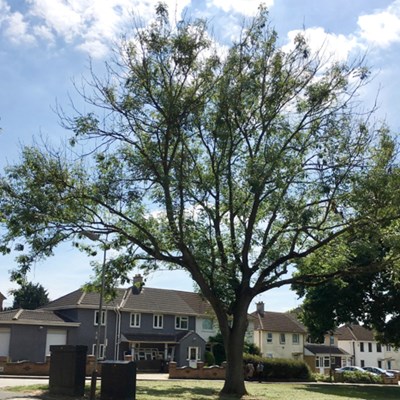Highway Spinney in Leicester will close to the public every weekday from Monday (6 November), to enable the city council’s trees & woodlands team to begin the removal of around 70 trees infected with ash dieback.
The ash dieback fungus causes the branches of a tree to gradually die back, become brittle and break apart – with falling branches representing a significant risk to the public.
The majority of the dying trees are adjacent to Hinckley Road and Braunstone Lane boundaries. Most are within falling zones of the roads beneath and the pathways within the spinney itself.
The spinney will be closed from 7am to 3pm, Monday to Friday, until 15 December to allow the work to take place. Lane closures will be required on the section of Braunstone Lane running alongside the spinney from 6-10 November. A lane closure will also be put in place on Hinckley Road from 13-17 November.
The city council announced last year that thousands of ash trees will have to be felled in Leicester over the next 10 years as a result of the disease that’s killed millions of trees across Europe and the UK.
Ash dieback was first detected in the UK in 2012, and although it was relatively slow to reach the East Midlands, it has now taken hold – with the city council fearing that around 15,000 ash trees in its ownership could be lost to the disease by 2032.
“Ash dieback is a highly destructive fungal disease that shuts down the tree’s vascular system and progressively kills it,” said Leicester City Council’s trees & woodlands manager Dave Jones.
“We’re systematically monitoring the 25,120 ash trees in our ownership but there’s nothing we can do to stop the disease from spreading, other than by removing infected and dangerous trees such as these in Highway Spinney.
“The impact of ash dieback across the UK will be devastating, particularly here in Leicester, where ash trees are so common.
“We are, however, developing a long-term recovery plan that will help restore our landscape and ensure that Leicester’s urban forest continues to be a major asset for generations to come.”
The city council published its tree strategy in November 2018, with the aim of ensuring that the current level of trees under the council’s control is extended and the quality improved. Since the implementation of the tree strategy in 2018, to the end of April 2023, the council has planted 32,265 new trees. Over the same period it has removed, as part of its tree management works, a total of 2,375 trees. This equates to just over 13 trees being planted for every tree that is removed.
Ash dieback arrived in Europe from Asia in the 1990s and rapidly spread, devastating the European ash that had no natural defence against it. The fungus releases spores that can be blown tens of miles away, penetrating a tree’s leaves and eventually blocking its water transport systems and killing it.
It's estimated that 75–95% of all the UK’s ash trees will be lost to the disease in the next 20 to 30 years, with devastating impact on the British landscape and the biodiversity of the nation’s woodlands.
More information about ash dieback is available on the council’s website here.
